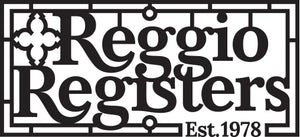How to Build a Color Palette
Looking to revamp your home’s interior? The best designs come down to the right color palette.
A color palette pairs color theory—a set of rules that pair the most appealing colors together for maximum effect—with existing design principles, making your home a much more balanced space.
Designers use color palettes all the time, but you don’t have to be a designer to make one yourself. Here’s how to build a color palette that elevates your interior from average to outstanding.
Understanding the Basics of Color
Color palettes come from color theory which attempts to understand and make the best use of the color wheel. The color wheel is the relationship between the different colors we see in the natural world.
There are three main color types that break up the color wheel and dictate your color palette:
-
Primary Colors: Red, yellow, and blue
-
Secondary Colors: Orange, green, and violet
- Tertiary Colors: Red-orange, yellow-orange, yellow-green, blue-green, blue-violet, red-violet
The color wheel is also broken down by color temperature, which includes:
-
Warm Colors: Red, orange, and yellow
-
Cool Colors: Green, blue, and purple
- Neutral Colors: Black, white, gray, tan, and brown
It’s important to take the main color types and their temperatures into consideration for your color palette. With a better grasp of the color basics, it’s time to pick your design style.
Pick a Design Style

Certain colors are going to work better in certain styles. Design styles are the perfect guidelines for pairing colors together, setting the right look and feel while taking everything into account. Here are a couple of popular design styles and the colors they employ:
-
Minimalism: Putting an emphasis on reduced clutter and clean surfaces, minimalist designs evoke a sense of calm through neutral colors like white, black, and gray
-
Maximalism: Compared to minimalism’s calm and decluttered aesthetic, maximalism is all about the bold and the bright. Light colors like yellows, oranges, and reds are popular choices for a maximalist look.
-
Japandi: Like the Scandinavian “hygge” design scheme, Japandi incorporates natural textures like stone and wood to bring balance and calm. Natural elements are paired with a natural color palette, including traditional Japanese color selections like black, dark green, and terra-cotta.
-
Mid-Century Modern: Mid-century modern design rose to prominence in the ‘50s and ‘60s but is making a comeback in today’s modern homes. Retro textures like wood, leather, corduroy, and velvet are paired with equally retro colors like green, navy, and purple.
- Coastal: Coastal designs combine the casual, laid-back feel of a beach house with the natural colors of the sand, sun, and waves nearby. That includes a light palette and bright whites, blues, and beiges.
With the right mixture of colors, a proper design style is only going to make your interior look better and feel more unified. But there is another way to incorporate a color palette without redesigning a whole room.
Take Your Whole Room Into Account

Take a look around your room. Believe it or not, you already have the ingredients for your color palette. From your walls to the floor, color is all around you. All you need to do is take notes and make things better.
So what features determine your color palette? Let these interior attributes lead the way:
-
Walls: Your walls hold a room’s predominant color scheme. Keeping your design scheme in mind, ensure the other features complement or parallel this color.
-
Flooring: Arguably the second most dominant color, flooring is another key player in your interior’s color palette. Many flooring options lean toward the darker side, like gray or dark brown, so pair any décor or wall repainting accordingly.
-
Furniture: Furniture provides an excellent contrast or complement to your dominant wall and flooring colors. It can also provide direction for the rest of your décor as you begin to accessorize and fill out your design scheme.
- Décor: Décor should be used for the finishing touches of color, but that doesn’t mean it isn’t important. Things like light fixtures, side tables, art, and register covers should blend in and stand out as their own individual aesthetic boosters.
Your design scheme and your existing interior features are big components for determining the right color palette. But another ingredient is rising in popularity, and you’re probably using it right now.
Make the Most of Metallics
With the resurgence of design styles like mid-century modern and Art Deco, metallic elements are once again becoming a go-to design staple. They’re typically featured in gold, silver, bronze, and other “luxurious” finishes, adding an extra bit of elegance to any room in your home.
Wondering where your metallic features are located? Some of the places where metals are common include:
-
Light Fixtures: Many light fixtures come with a gold or silver base already, making them great for elegant design schemes that emphasize brightness and flair.
-
Mirrors: Just like light fixtures, many mirrors have decorative borders made of metal. Use the color of a metallic mirror to your advantage in places like your entryway.
- Register Covers: Register covers tie your entire room together or add a bit of pop with complementary or contrasting design elements. Metallic register covers come in several different finishes and a variety of patterns to enhance your design and the corresponding color palette.
The right color palette in the proper application takes your interior design to the next level.
Want more tips and tricks on how to pick the perfect color register cover?
